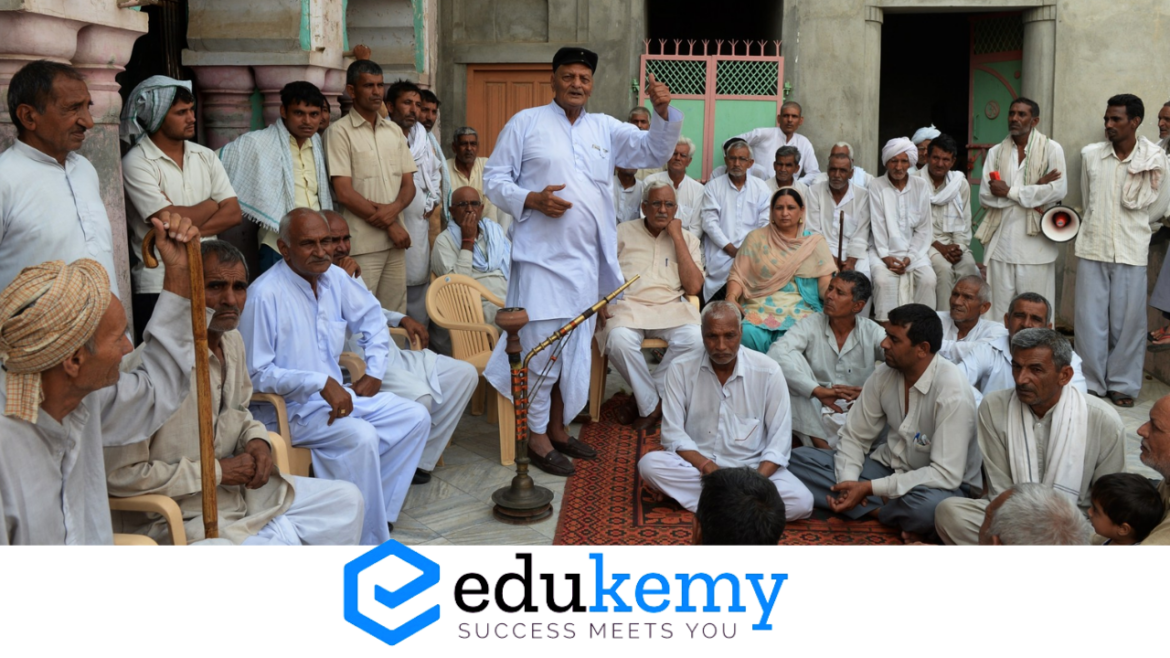
India’s journey towards societal transformation involves breaking down patriarchal norms, fostering inclusivity, and promoting democratic values. Several key initiatives have been implemented to achieve this, including the provision of one-third reservation for women, promotion of direct democracy, and the devolution of power to local leaders. In this article we will explore about Role of Panchayat Raj
Contents
- 1 Gender Neutrality Through Reservation:
- 2 Inclusive Democracy:
- 3 Improved Public Goods Delivery:
- 4 Mainstreaming Marginalized Communities:
- 5 Promotion of Social Capital:
- 6 Enhanced Choices in Health and Education:
- 7 Distribution of Economic Capital:
- 8 Tailor-Made Administration for Tribals:
- 9 Environmental Awareness and Sustainable Development:
- 10 Strengthening Democracy at the Grassroots:
- 11 Frequently Asked Questions
- 11.1 1.What is Panchayat Raj, and how does it function in rural India?
- 11.2 2.How has the introduction of Panchayat Raj impacted the traditional power structure in rural India?
- 11.3 3.What role do women play in the Panchayat Raj system, and how has it affected gender dynamics in rural India?
- 11.4 4.What are some examples of initiatives undertaken by Panchayats to address local development issues?
- 11.5 5.How does the Panchayat Raj system promote inclusivity and social justice in rural India?
- 12 In case you still have your doubts, contact us on 9811333901.
Gender Neutrality Through Reservation:
The provision of one-third reservation for women in various spheres of governance has been a pivotal step toward dismantling patriarchal norms. This measure has empowered women to actively participate in democracy, challenging traditional power structures and promoting gender-neutral representation.
Inclusive Democracy:
The promotion of direct democracy and inclusive participation has been instrumental in eliminating deeply rooted social evils such as the caste system and khap panchayats. By bringing decision-making closer to the people, these initiatives empower communities to address their own challenges and foster social cohesion.
Improved Public Goods Delivery:
Decentralization of administration, constitutionally empowering local leaders, has enhanced the delivery of public goods. Local leaders are better equipped to understand the unique needs of their communities, resulting in more effective and targeted public service delivery.
Mainstreaming Marginalized Communities:
Empowering vulnerable and marginalized sections, particularly SC/ST communities, has led to their mainstreaming into the socio-economic fabric. The devolution of power ensures that their voices are heard, fostering a more inclusive and equitable society.
Promotion of Social Capital:
The promotion of social capital through cooperative social development has been a catalyst for positive change. By encouraging collective efforts and community engagement, decentralization of power strengthens social bonds, contributing to overall societal well-being.
Enhanced Choices in Health and Education:
Devolution of power and changing social structures have expanded choices in health and education. Local leaders are better positioned to address community-specific needs, resulting in improved access and quality of essential services.
Distribution of Economic Capital:
Decentralization has led to the distribution of economic capital, providing enhanced employment opportunities. This, in turn, has elevated living standards in rural areas, contributing to the urbanization of these regions.
Tailor-Made Administration for Tribals:
Autonomy given to tribal areas in matters of administration has facilitated tailor-made governance for tribal communities. This approach recognizes the unique needs and challenges faced by tribal populations, fostering their sustainable development.
Environmental Awareness and Sustainable Development:
Decentralization has raised awareness about environmental protection and promoted sustainable development practices. Local leaders, being intimately connected with their communities, prioritize initiatives that ensure the long-term well-being of both people and the environment.
Strengthening Democracy at the Grassroots:
Empowering democracy through strengthening direct elections at the grassroots level ensures a more participatory and engaged citizenry. This democratic empowerment is crucial for fostering a sense of ownership and responsibility among the population.
Frequently Asked Questions
1.What is Panchayat Raj, and how does it function in rural India?
Panchayat Raj refers to the system of local self-governance in rural areas of India. It involves the establishment of elected local bodies at the village, intermediate (block), and district levels. These bodies, known as Panchayats, are responsible for local administration, development planning, and implementing government schemes at the grassroots level.
2.How has the introduction of Panchayat Raj impacted the traditional power structure in rural India?
The introduction of Panchayat Raj has led to a significant transformation in the traditional power structure of rural India. It has decentralized power from higher levels of government to local communities, thereby empowering villagers to participate in decision-making processes and governance affairs.
3.What role do women play in the Panchayat Raj system, and how has it affected gender dynamics in rural India?
One of the significant aspects of Panchayat Raj is the reservation of seats for women in local bodies. This reservation has provided women with opportunities to participate in politics and decision-making at the grassroots level. As a result, it has challenged traditional gender norms and contributed to the empowerment of women in rural India.
4.What are some examples of initiatives undertaken by Panchayats to address local development issues?
Panchayats are responsible for identifying and addressing local development issues in rural areas. They undertake various initiatives such as infrastructure development, healthcare provision, education programs, water resource management, and poverty alleviation schemes. These initiatives are tailored to meet the specific needs of each village or block.
The Panchayat Raj system promotes inclusivity and social justice by providing marginalized communities, including Scheduled Castes (SCs), Scheduled Tribes (STs), and Other Backward Classes (OBCs), with representation and a voice in local governance. This helps in addressing their concerns and ensuring equitable development across all sections of society.

In case you still have your doubts, contact us on 9811333901.
For UPSC Prelims Resources, Click here
For Daily Updates and Study Material:
Join our Telegram Channel – Edukemy for IAS
- 1. Learn through Videos – here
- 2. Be Exam Ready by Practicing Daily MCQs – here
- 3. Daily Newsletter – Get all your Current Affairs Covered – here
- 4. Mains Answer Writing Practice – here

